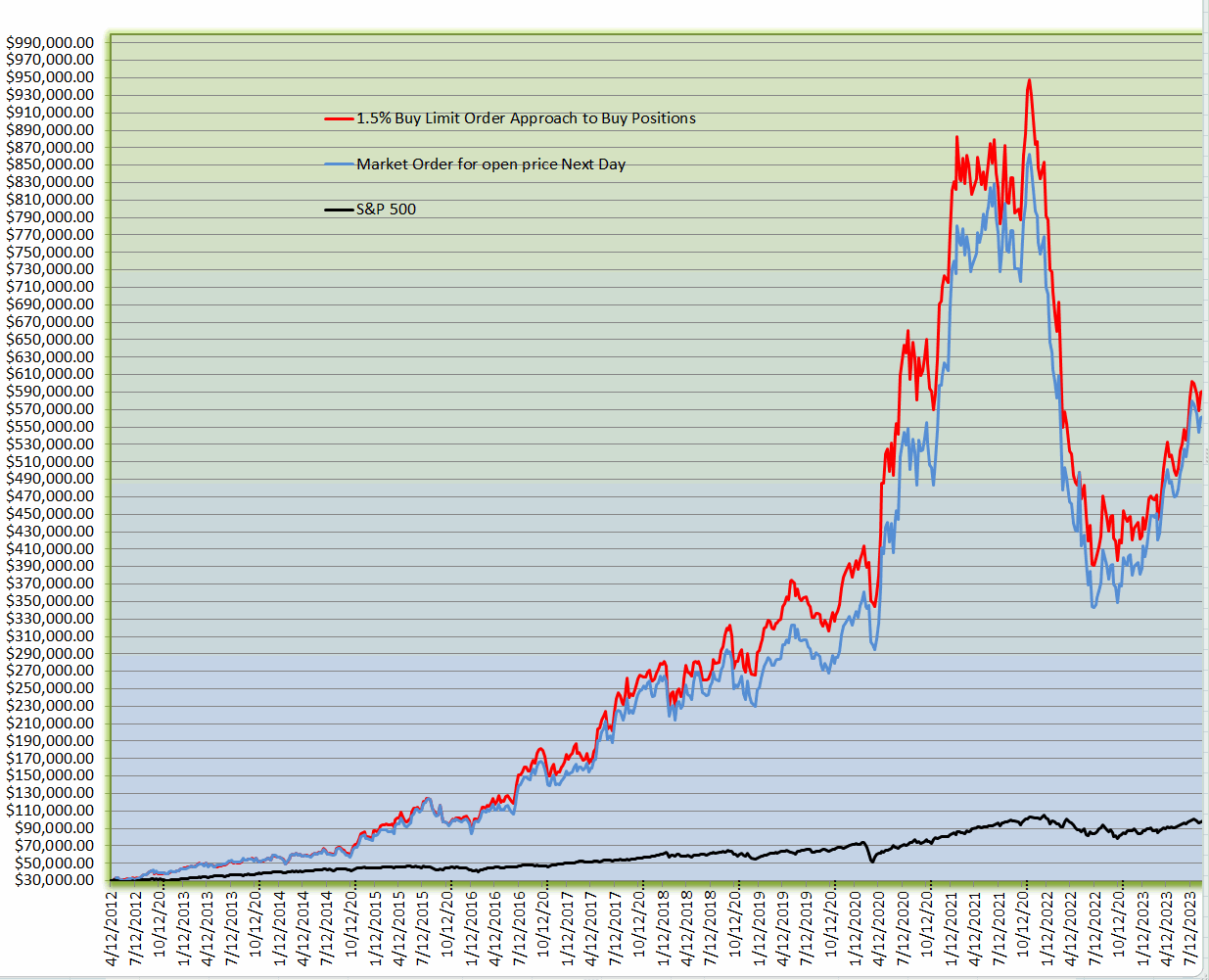Performance of First 11+ Years of the 3 Stocks to Wealth Service Launched in April 2012
(Performance starting with $30,000)
April 12,2012 to market open on August 31, 2023*
Assumptions Made in Creating Performance Chart:
- The account is fully invested in the 3 stocks that appeared in the service each week. Includes compounding starting with $30,000 growing to $561,910 with the market order approach to enter new positions as defined below and $30k growing to $591,142 with the buy-limit approach to enter new positions – which is nearly a 20-bagger in around 11.4 years before fees. The black line labeled “S&P 500” is the S&P 500 index which was about a 3-bagger ($99,001) in around 11.4 years before dividends and fees.
- You hold our 3 top stocks each week. When a stock comes off the list of top 3 stocks and a new one replaces it, you sell the stock coming off the list at the market open price the trading day after the 3 Stocks to Wealth update is published. (As of late 2018, the update is now published on Monday instead of Thursday for changes on Tuesday). On average, about 1.5 to 2 of the 3 stocks change each week.
- The blue line indicates the performance using market orders to buy new positions. For the market order approach, you would use proceeds from selling the stock coming off the list the morning after the weekly update is published to buy the new stock on the same day at the market open price. We assume total funds at that point are split equally among the 3 stocks. This approach is not recommended due to the time delay that can occur between the sale of the old stocks and the purchase of the new stocks. Instead, we use the buy-limit order approach represented by the red line on the chart and explained below.
- The red line on the chart represents the performance if you would have used a 1.5% buy limit order to enter new positions the morning after the weekly update was published on the site. Meaning you put in a buy limit order to buy all new positions 1.5% below the open price the morning after the weekly update is published. If the limit order does not fill during that day, you would then change the order to a market order to achieve the market closing price. Using buy limit orders to enter positions in this manner nearly eliminates the negative affects of slippage when buying new positions and increases the performance over the market order approach as can be seen on the chart.
- Chart does not include slippage, commission and fees.
- Although it does not include slippage, the buy limit order approach greatly reduces any negative affects of slippage. Most online brokers now charge $0 for commissions.
- As seen on the chart, data points are on a week ending basis the day after the weekly update is published. So drawdowns based on daily highs and lows would be larger.
- A few stocks were bought out, merged or taken private before making the performance chart. If market data is unknown for a stock due to this or another reason, we assumed the stock made no gain. Generally, companies are purchased well above the current stock price. And the average gains were much higher than zero.
* Hypothetical returns based on following instructions given above on the stocks that appeared in the 3 Stocks to Wealth service each week. Results vary. See earnings disclaimer and terms of use

